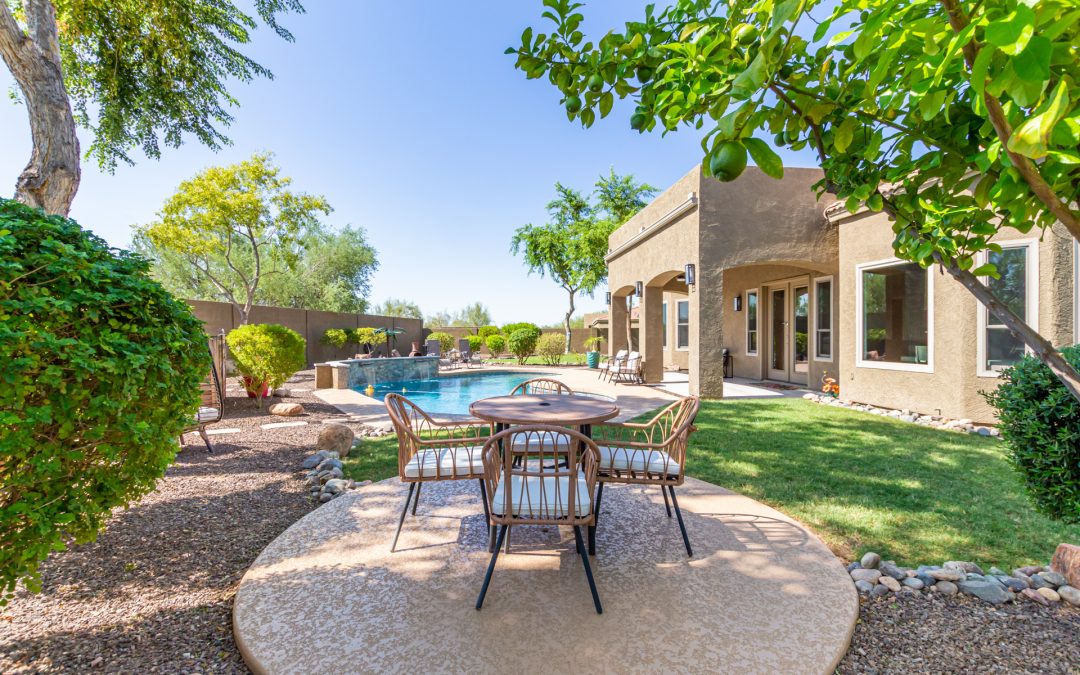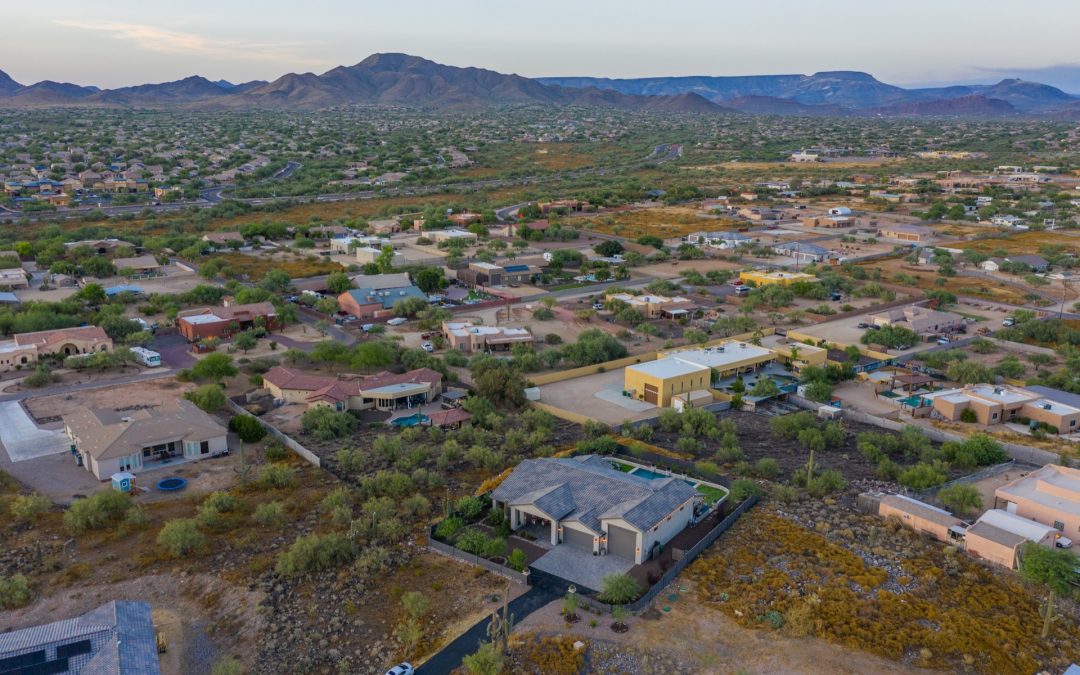by MICHAEL BODEEN | Jan 26, 2024 | Bodeen Team Blog, Mike's "Real State" of the Market, Uncategorized
The Phoenix Metro residential real estate market began the new year in balanced territory. It didn’t take long for the Cromford Market Index (CMI) to rise into a seller’s market – increasing 12.4%.
The news was not all bad for buyers. Year to date we have seen a healthy amount of new listings coming onto the market – 7,467 new listings which is up more than 22% compared to January 2023. We currently have 15,644 homes on the market, an increase from 15,086 last month – a 4% rise in inventory. Not earth shattering, but a gain, nonetheless.
Combined with lower mortgage rates, offers on homes have increased quite a bit, but so has inventory. The new supply of homes on the market has also exceeded 2021 and 2022.
“Balance has seldom defined us…unless mortgage rates drop sufficient enough to move many more homeowners to sell, lack of supply will win the day. And buyers will again get the short end of the stick.”
Cromford noted that with demand and supply both increasing, sales volume will likewise increase. As long as these index’s continue to rise at similar rates, there won’t be a huge threat of runaway appreciation, per Cromford. That even ratio would be ideal, but I personally don’t think that will happen. We are an all-in or all out market. Balance has seldom defined us. And if I had to pick, I’d say that unless mortgage rates drop sufficient enough to move many more homeowners to sell, lack of supply will win the day. And buyers will again get the short end of the stick.
Record Asking Price Per Square Foot (PSF)
The average price PSF for listings (not sales) is at a record high of $369 as of the 25th. So how does that compute to future sales price PSF? Asking prices are a starting point, and of course we’ve been in markets where the final sales price was HIGHER than the listed price, but historically they are less than the actual list price. The current average sales price ratio to list price is 97.36%. Two years ago the ratio was 99.75%!
The current price disparity is stark – as it usually is. The current asking price per square foot as mentioned above is $369. The current pending price per square foot is $322. These are sales under contract showing only the listed and not closed price. The monthly average sales (closed) price is now at $295 – a 27% difference from the asking price. (see chart)

by MICHAEL BODEEN | Nov 27, 2023 | Bodeen Team Blog, Mike's "Real State" of the Market, North Scottsdale News, Real Estate News, Uncategorized
We trust your Thanksgiving weekend was wonderful! Apart from the traditional, additional, and certainly not subliminal poundage gained, it was for the Bodeen family and friends.
As most of our readers are aware, our current housing shortage is due in large part to homeowners having very low mortgage rates. They are not willing to bite off a 7% or 8% mortgage rate to sell and buy.
According to a new report from Redfin, via BusinessWire.com, roughly 6 of 7 (85%) homeowners with mortgages have rates under 5%. A large percentage of the under 5 percenters have rates in the 2.5% to 3.5% range. So far, there’s not enough upside for them to sell.
Then, I came across an article a few days ago from HousingWire.com provoking further thought. The article stated that the largest share of people aged 65 or older in our country own the largest share of mortgage-free homes. As of 2022, almost 40% of U.S. homeowners owned their homes free and clear. Read the housingwire.com article here.
This is wonderful news, if you’re one of those fortunate enough to be in the 40%.
On top of ALL this, is yet another article (Forbes) about how my generation, the Baby Boomers, will bequeath almost 70 trillion (that’s illion with a Tr) dollars to our offspring, and much of it before 2030. With the greatest generation winding down and the Boomers soon to follow, the greatest wealth transfer in the history of mankind is happening – now!
How will these new generations invest/spend this absurdly huge amount of passed down wealth? In many things of course, but one investment for sure, will be real estate. As my former and deceased Realtor father-in-law used to preach to anyone who would listen, (which wasn’t many), “you can make more babies, but you can’t make more land.”
So, when we encourage, nigh, exhort our friends, or anyone who will listen, to buy real estate, it’s knowing that successive gens will be able to step in line ahead of you to do so. Beat them to it!
The final paragraph of this Forbes article reads, “Being locked out of the housing market due to high-interest rates and housing prices could soon change. With the new largess, Millennials could purchase new homes and even secondary vacation homes…” Read the Forbes article here
So renters, to sum up, at least 3 forces are pitted against the future affordability of a home for you:
- 40% of Americans who have no mortgage. Even if they might sell, these would be cash buyer competitors for the home you may want.
- 85% of homeowners with a mortgage have an existing rate under 5%, and are not too keen on selling than buying a home with a 7% or 8% new mortgage.
- Current and future competition from all cash nouveau riche home buyers.
So, when Mike or Jonathan Bodeen continue to encourage, nigh, exhort our friends, or anyone who will listen, to buy real estate, it’s knowing that successive gens will be able to step in line ahead of you to do so.
Beat them to it!

by jonbodeen | Nov 20, 2023 | Uncategorized
Buoyed by good news showing that our overheated economy is finally cooling, and inflation lowering, conventional rates have dropped down to 7.37% as of Friday, the 17th of November, per Mortgage News Daily. Better yet, FHA and VA rates are at or near 6.7% while a 15-year amortized mortgage is at 6.75%.
Though not spectacularly low, we expect buyer activity will pick up. This does not mean prices will immediately drop. Buyers will, for the short term, still be in the driver’s seat. We expect that sellers will (and should) provide buyers with concessions to assist them with more affordable rates. How much in concessions you ask? Cromford reports that so far in November, the median dollar amount of concessions is up 33% to $9,900 from the month before for those transactions that had concessions. Even though FHA and VA are in the 6.7% range, that is still VERY expensive for many or most buyers.
If rates will go lower, should they therefore wait to buy? Not a bad choice if you’ve got the crystal ball that no one else seems to have.
The big question of course is which direction rates will go? Up until now the economy has strongly rebuffed the Fed’s continual rate increases. The Phoenix economy remains quite strong, and our shelter costs (home ownership and renting), though abating some, are still much higher than two years ago – when rates were in the 3’s and prices much lower.
Buyers, I know what you’re thinking. If rates will go lower, should they therefore wait to buy? Not a bad choice if you’ve got the crystal ball that no one else seems to have. I recall friends and clients of mine (and myself) refinancing 2 and 3 times when rates were continuously dropping in years past.

Here’s my advice, and readers of our Snapshot have heard this before: Start or keep looking for your home. IF you find THE house that checks most all the boxes where you can see yourself enjoying living – and you can afford it, go for it. If rates drop a lot, refi. If rates hold pat or increase, you made a wise choice.

by MICHAEL BODEEN | Oct 2, 2023 | Bodeen Team Blog, Mike's "Real State" of the Market, Real Estate News, Uncategorized
Scottsdale and Phoenix Real Estate Inventory Rise
In this current Scottdale and Phoenix Metro residential real estate market, something’s gonna have to give, and we’re not sure what that will be.
Historically and economically, when mortgage interest rates rise, sales and new escrows will slow. When inventory increases, buyers can gain an upper hand in negotiations with sellers, thereby having the tendency to reduce prices. When all of these factors are happening at the same time, prices will drop – or will they?
First off, we’re currently seeing the drum beat rise of mortgage rates taking us into the mid 7% range. We’re also witnessing the rise of homes for sale (inventory), albeit, slowly, but rising nonetheless. Next, listings under contract (6,983) at this time of year (September) are at their lowest point since 2007. Sales per month (6,207) are at their lowest levels since 2008 (Aug).
Yet Prices Continue to Rise?
Finally, the release of last week’s S&P / Case-Shiller Home Price Index showed that Phoenix is again catapulting towards the top (2nd Place) of the national monthly sales price chart increasing .88% compared to the previous month. A note of caution on this index, however, is that it’s 3 months behind in reporting sales prices.
The only plausible explanation for our price increase remains the still very low level of inventory. And this is not just in Phoenix, but nationally too. Judging by the slowing market as a result of higher rates, I think we’ll start seeing price drops. The pressure for sellers to sell will grow with passing time. Affordability is suffering and right now it looks like this could continue into next year. A reversal in mortgage rate hikes, however, would spark buyers.
For buyers, time on the market for any given listing, will let them know how much negotiating room there might be. For sellers, correct pricing is critical. Adding or agreeing to incentives for buyers such as rate buy-downs may also help that property to get under contract.

by MICHAEL BODEEN | Jul 26, 2022 | Bodeen Team Blog, Mike's "Real State" of the Market, Uncategorized
The Cromford Report reports that on March 16th, of this year, the Greater Phoenix Metro cities totaled 4,367 listings. Just over 4 months later, we now total 16,235 current listings and growing. The following housing styles and their listing supply increase:
- Single-family Detached – up 344%
- Townhouse – up 370%
- Apartment-style – up 288%
- Gemini / Twin – up 130%
- Loft-style – up 240%
- Patio Home – up 257%
- Mobile Home – up 65%
- Modular / Manufactured – up 20%
Many of our cities are now in the “Balanced Market Zone” and some, including Buckeye and Queen Creek are now in a “Buyer’s Market.” This incredible speed from Seller to Buyer’s market is historic.

by MICHAEL BODEEN | Mar 28, 2022 | Bodeen Team Blog, Buying a Home, Mike's "Real State" of the Market, Selling a Home, Uncategorized
I went to the Suns game yesterday (vs Philly) with my buddy Walter. He has owned Suns season tickets since the Steve Nash era, the last time the local team was a championship caliber team, besides last year. I usually drive to these games, and they’re most always at night, but yesterday Walter graciously drove and it was an afternoon game. Now, why does this matter, and what’s it got to do with real estate?
Glad you asked.
Not driving, and being able to be an observer, I was blown away with the upward growth (literally) of downtown Phoenix. Numerous high-rise cranes were building modern commercial and residential structures. Former run-down neighborhoods (not all) were sprouting economic vitality. The arena (Footprint Center) was like no other arena event I’ve ever attended. It was a sellout (and it’s not even the playoffs) and the fan/arena noise was an amazingly fun assault on the senses. Of course, it does help to have the best pro team in the nation😉
Segue.
“…the Phoenix Metro community as a whole, saw more population growth than any other metro community…”
According to Census data, Arizona’s population gained almost 100,000 this past year. And 99% of our resident growth is attributed to migration, rather than the “natural change” of births and deaths. Of the 98,330 new residents, only 832 were attributable to natural change. Check out this article from the Business Journal:
Maricopa County alone, added more residents (58,246) than any other County in the country. Further, the Phoenix Metro community as a whole, saw more population growth than any other metro community, behind only Dallas-Fort Worth-Arlington area. Arizona ranks, per the Census, as the 3rd fastest growing state in the U.S.
What was just a few years ago never really discussed, but is now the most oft question of the day for The Bodeen Team:
When will this (price escalation) end? Based on the above local and statewide story, not real soon. Seemingly, our demand for a limited supply of housing will continue unabated for the foreseeable future. This will further increase values locally, and statewide.
Caveat: Having said that, in 46 years of residential real estate experience, I’m no stranger to market changes. And when they happen, they can happen quickly.






